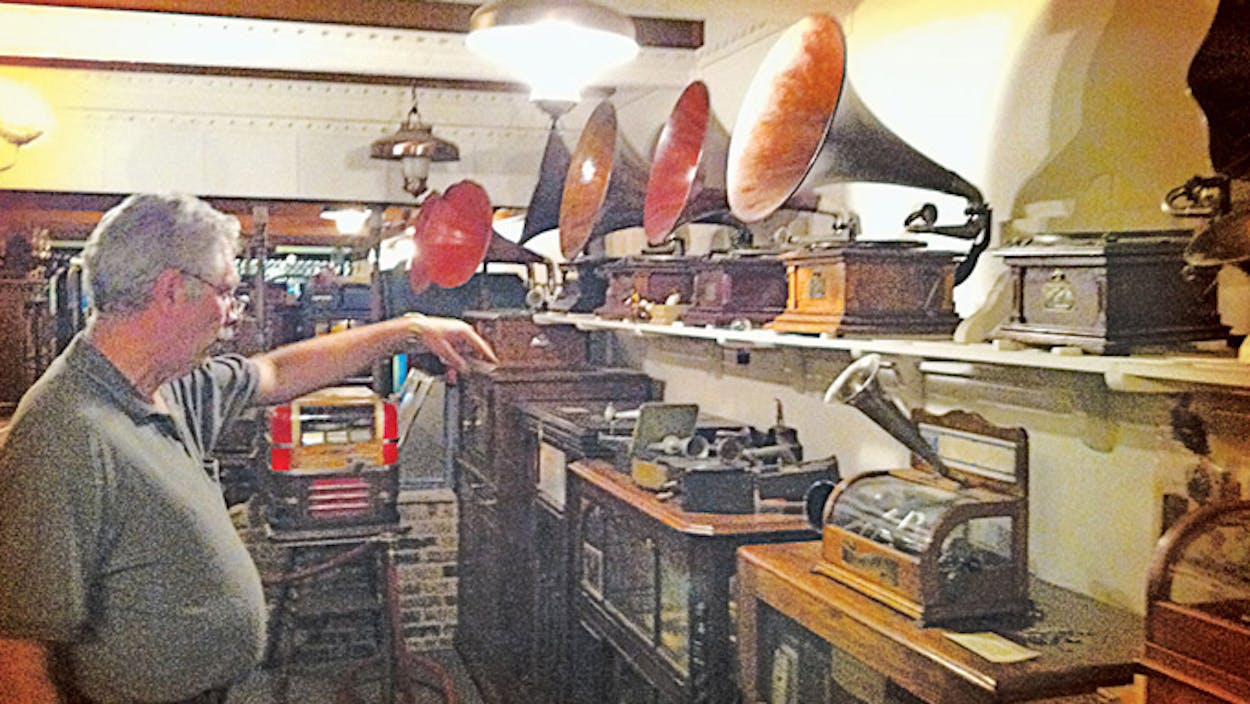One Tuesday morning last fall, ninety-year-old lumber magnate Homer DeFord waited in a cramped, dim room in Duncanville for his associate, Rick Wilkins, to arrive with a package. Decades ago, the room had been his office. Today, the windows are boarded shut, and the building is dwarfed by the sprawling warehouses and storage yards that make up the modern headquarters of DeFord Lumber Company. There are nicer spaces on the premises, but Homer, a round man with wisps of white hair, likes the room where his empire was born.
He also likes it because it’s crammed with his stuff, his beloved machines, many of which are older than he is. There are Edison phonographs that play recordings on cylinders made of wax, grind organs from the 1790’s, and a windup monkey that can smoke a cigarette. Homer has devoted the past 45 years to collecting these mechanical antiques.
He didn’t always have the funds for his hobby. When he started DeFord, in 1964, he had to search for business “like a prospector,” he said. He made his logo a miner riding a donkey. The searching paid off, and by the mid-seventies, housing booms around the suburbs of North Texas had made him a fortune. He eventually turned DeFord over to his sons and started prospecting elsewhere.
In 1975 he answered a newspaper classified ad from “The Gramophone Man.” That’s how he met Rick, a nerdy college student who found and refurbished gramophones—basically an early version of a record player—to pay his tuition. Homer bought one, and in 1976 he hired Rick (pictured) to help him curate a collection of music machines.
Homer is the only boss Rick has known since then. He has financed Rick’s scouting trips to Poland, Germany, Ukraine, France, Mexico, Switzerland, and beyond. The result is almost five hundred handpicked antiques—a collection that is their life. Rick even lives on-site, in a two-bedroom apartment with his Ukrainian wife, whom he met on one of his trips.
When Rick finally entered the room, Homer shifted in his chair. Rick had returned from a Michigan buying trip just the night before, after a three-day marathon drive, and he carried a small case the size of an engagement ring box. He cracked the lid for Homer, and it tinged out a few notes. “This is the earliest prototype of a music box,” Rick said, gesturing excitedly. It was built around 1790 in Switzerland, he explained, and eventually it became the chime mechanism in musical pocket watches. “If I had missed this one, I may never have gotten one. At any price!”
Looking around the room, it was clear that Rick’s obsessive pursuit had paid off. There was a mobile Moviola silent movie projector from 1921; a row of penny-operated peephole machines that show flip-card films of fighting pirates and dancing girls; a Scopitone from the fifties, made obsolete by televisions like the early color models also in the room; the country’s largest collection, by Homer’s reckoning, of mechanical music machines dating from the late eighteenth century; Wurlitzer nickelodeons; automated banjos and guitars and violins in majestic wood cases; a music box with chirping birds; and a towering orchestral Aeolian organ that Mark Twain helped develop.
In 2011, the year he turned 89, Homer realized he was getting old. He asked his son Ronnie to find a new home for the collection, something public and permanent. The University of North Texas, Texas Christian University, and Southern Methodist University were all interested. The City of Dallas even proposed exhibiting the machines on eight thousand square feet of convention center space. But Homer ended up backing out of each discussion. The collection would stay at the lumberyard, where he and Rick could maintain total control.
Last fall Ronnie razed a section on the north side of the lot and built a massive brick-and-sheet-metal building to showcase their machines, what Homer and Rick are calling the Olden Year Musical Museum. As the pair debates every detail, from landscaping to the arrangement of the displays, the opening date moves further and further away.
But they have finished one thing: a clock tower out front with a German-built pendulum mechanism that’s more than 160 years old. When it lights up, Homer hopes it will draw travelers to the museum to view the collection that will consume the last of his time.







